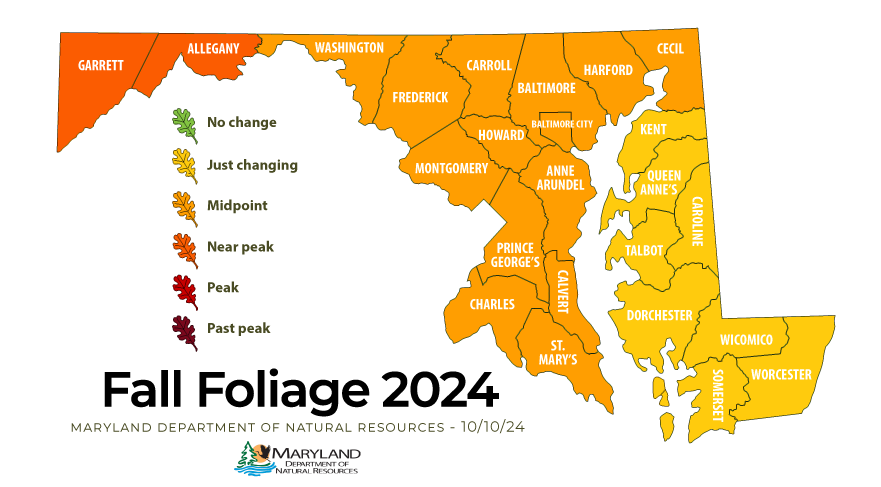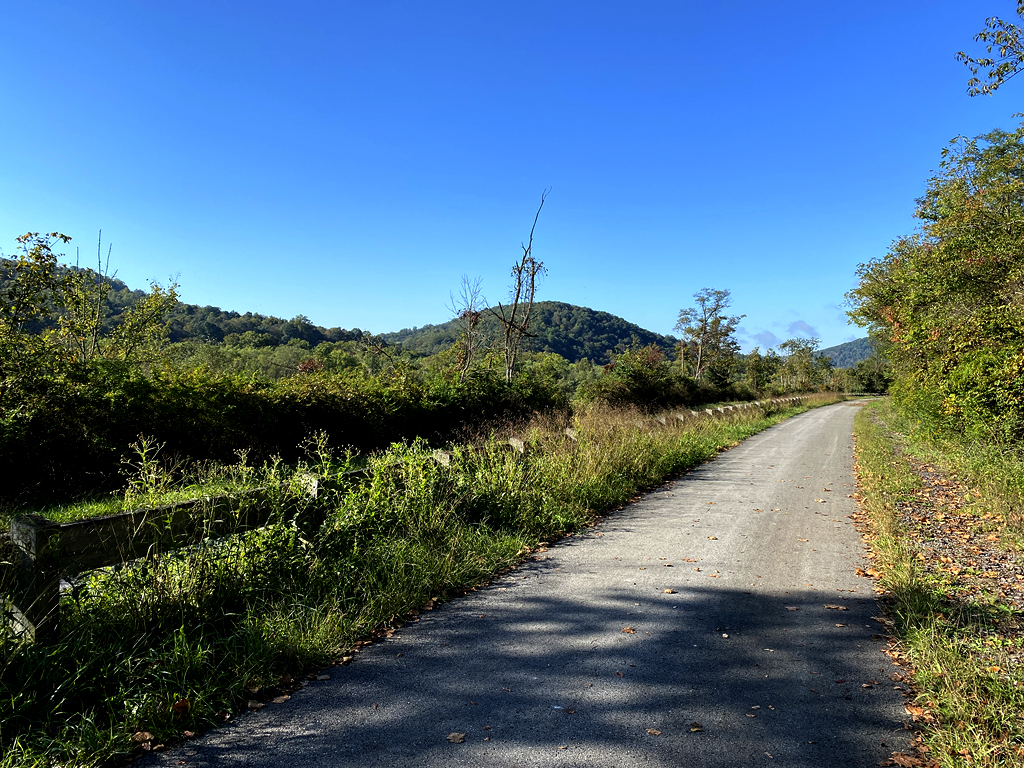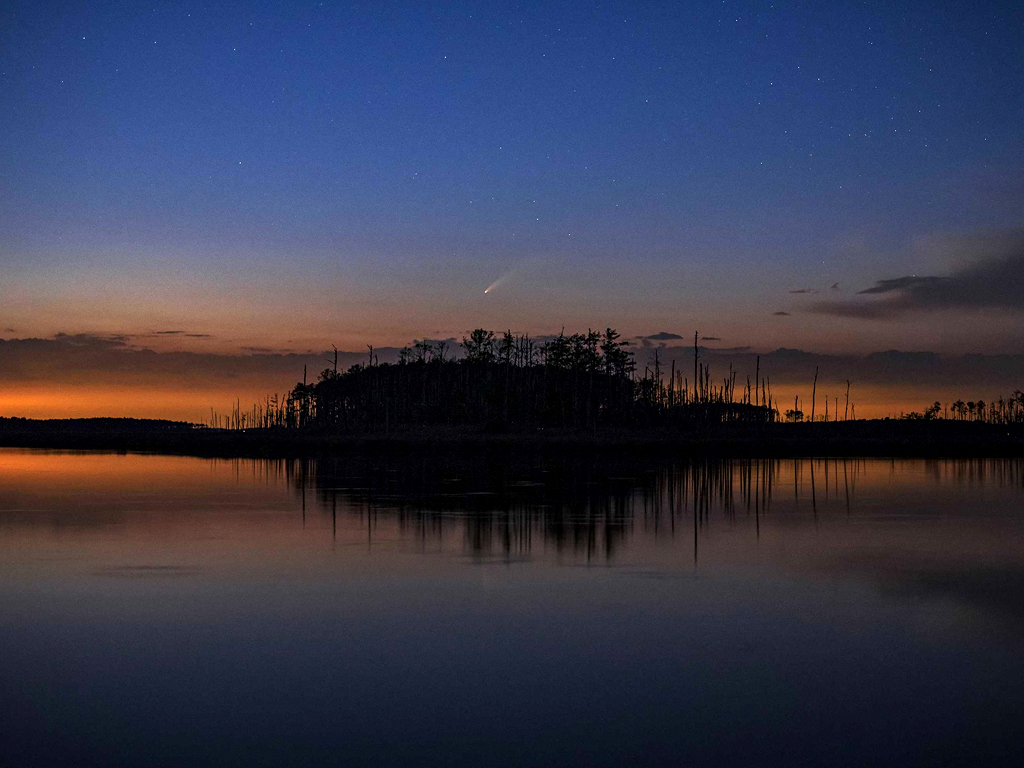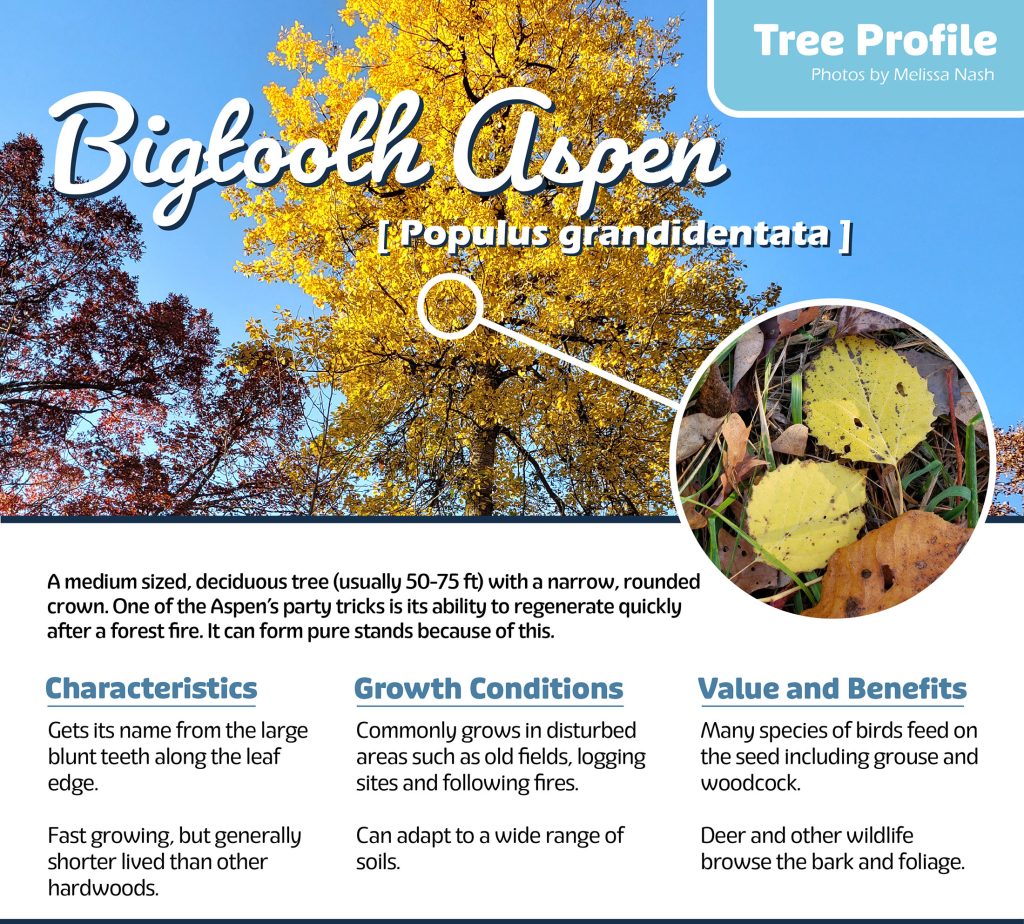Welcome to this week’s Fall Foliage Report for the Old Line State – or maybe it’s the Gold Line State. That’s what many of the hickories and birch trees in our state are showing right now – leaves with yellow, golden hues.
Overall, foresters and rangers continue to report a lackluster leaf show for 2024. Recent wind and rain have knocked down dry leaves.
Oaks are dropping acorns. In this issue, you can read more about how to tell the difference between Maryland’s oaks and acorns in Forester Melissa Nash’s report. Parts of the state are experiencing “peaks” in foliage for certain tree species.
In the Bear Pond Mountains in Washington County, areas of hickory, maple, birch, and black gum are peaking, according to forester Aaron Cook.
“This weekend would be a fantastic time to hike the Appalachian Trail in Washington County, or explore neighboring Frederick County at Catoctin Mountain Park, Cunningham Falls State Park, or Gambrill State Park,” Cook said.
Field Reports
Western Region
Sean Nolan, Forest Manager, Savage River State Forest, Garrett County:
Recent wet weather and wind have brought down many of the changing leaves. Current conditions are spotty, with the majority of the maple trees (red and sugar) along with beech and birch either showing good color or bare from recent weather while the oaks remain mostly green or just starting to change. Trees on the ridge tops are bare compared to those on the slopes and in the hollows that were better sheltered from recent wind. With the oak trees starting to show color and forecasted low temperatures for the remainder of the week it seems that a second wave of color change should occur in the coming 1-2 weeks before it is over for the season.
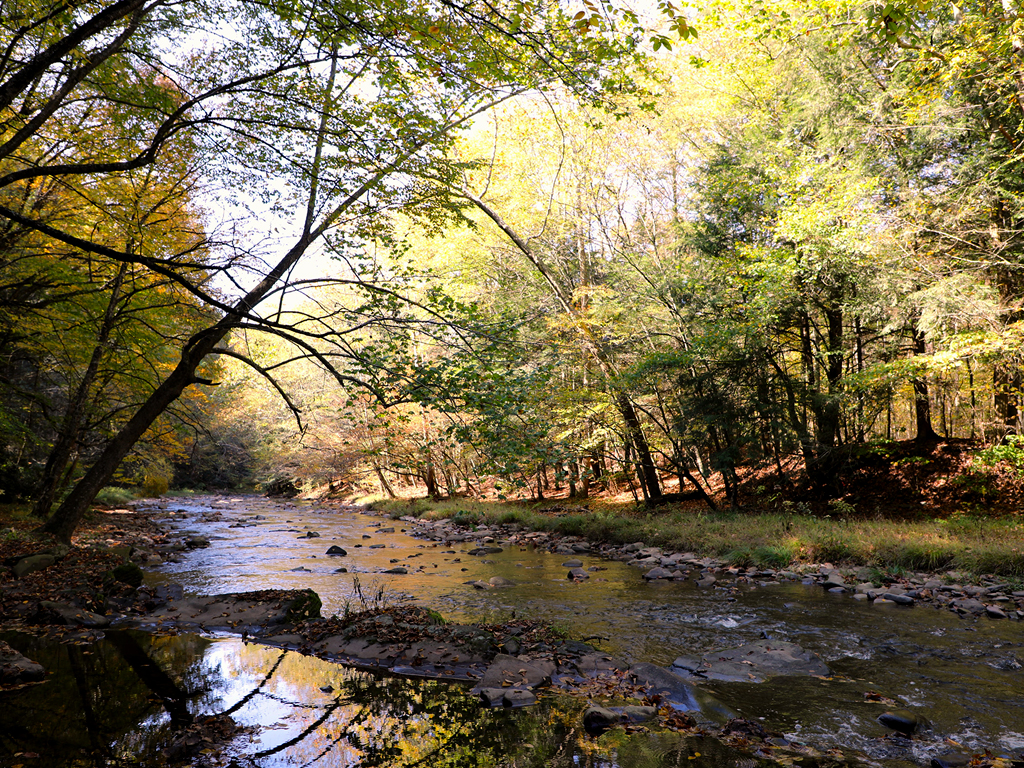
Photo by Kara Taylor
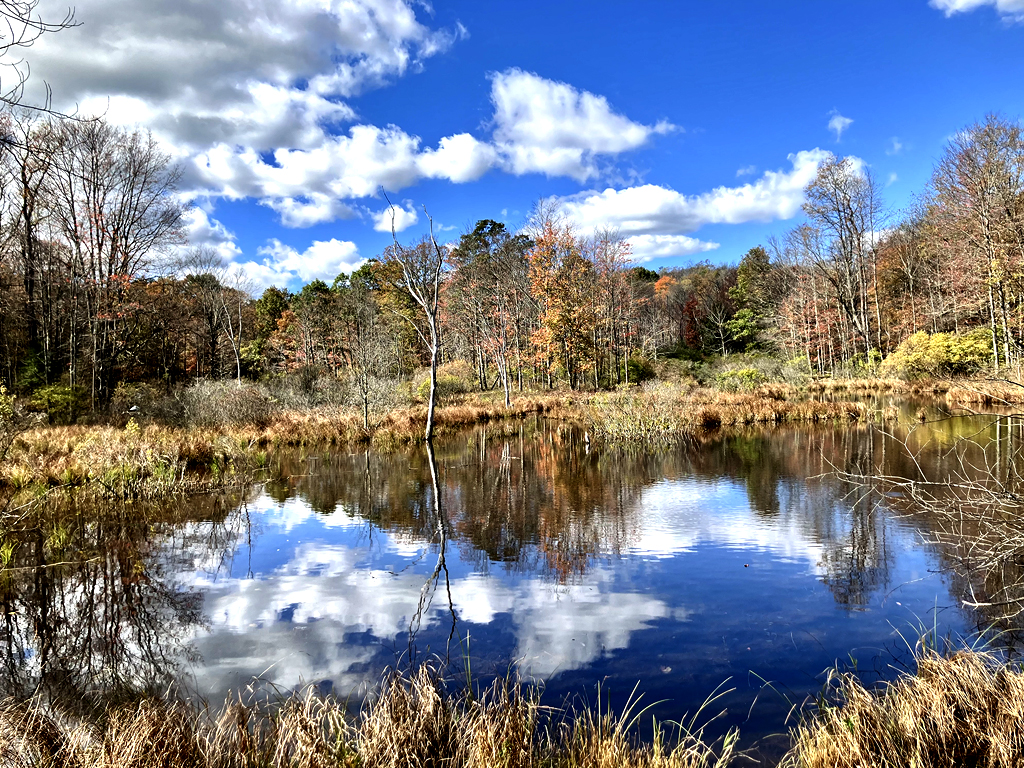
The recent high winds and rain left the trees around this wetland on Snaggy Mountain devoid of foliage. Photo by Scott Campbell, Forest Manager for the Maryland Forest Service, Potomac-Garrett State Forest
Samantha Dixon, Park Ranger at Rocky Gap State Park, Allegany County:
Leaves in the park are starting to change, but are not at peak yet. As expected, the drought this summer has left most of the leaves to dry and fall without much vibrancy this year. Most gums and hickories are already past peak, while oaks are still completely green.

Photo by Samantha Dixon
Melissa Nash, Garrett and Allegany Project Manager for Maryland Forest Service, Garrett and Allegany Counties
Going nuts! Fall is not only a time to enjoy beautiful fall foliage, but a time when you will see our oak forests begin to drop their acorns.
Collectively called “mast” nuts (hard mast) and fruits (soft mast) are seeds produced by trees that are consumed by a variety of wildlife species. In particular, acorns provide an important food source for a variety of wildlife species throughout the fall and winter. Acorns also enable forest regeneration through the growth of new seedlings. Acorns are produced by oak species, which are dominant in forests in the western part of the state. White oak species (white oak, chestnut oak) have leaves with rounded lobes. Their acorns are often more elongated, generally drop earlier in the season and begin to sprout soon after falling. Red oak species (northern red oak, black oak, scarlet oak) have leaves with pointed lobes. Their acorns are generally more rounded, drop later in the season and require a process called stratification, spouting the following spring. Many animals including deer, squirrels, turkeys, bears, chipmunks and grouse partake in the acorn feast. Acorn production often follows a boom and bust cycle, where trees produce an overabundance in some years, while other years are much more lean. Populations of many smaller animals (such as squirrels) that depend on acorns as a food source have been known to fluctuate in reaction to the acorn crop. Other common native nut producing species in Maryland include the hickories (shagbark hickory, pignut hickory, mockernut hickory, bitternut hickory), black walnut, and hazelnut.
Want to check out the leaves in Garrett County? Follow this driving tour for the region.
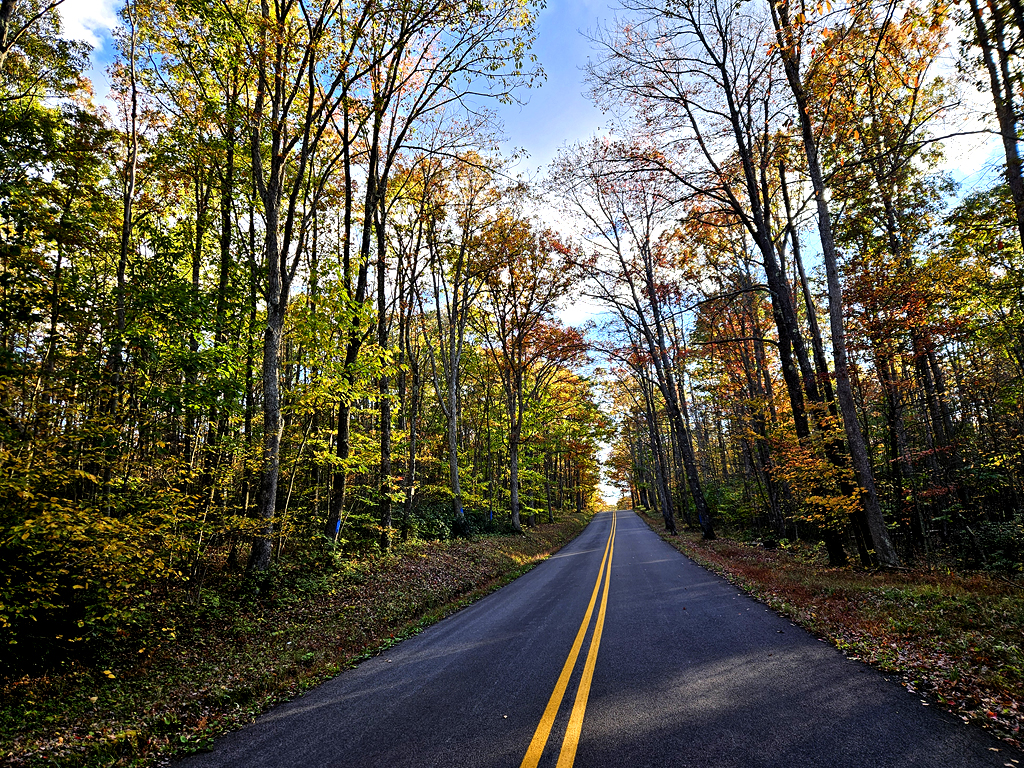
Oranges, browns and yellows show in the sun along a country road. Photo by Melissa Nash
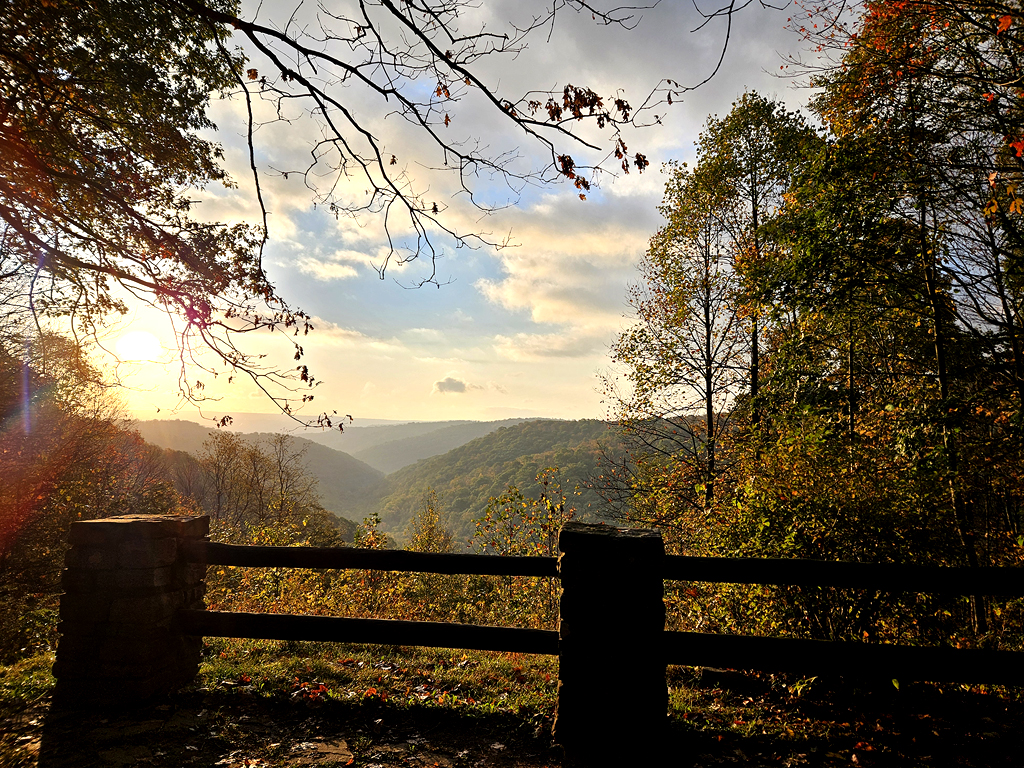
Monroe Run Scenic Overlook, Photo by Melissa Nash
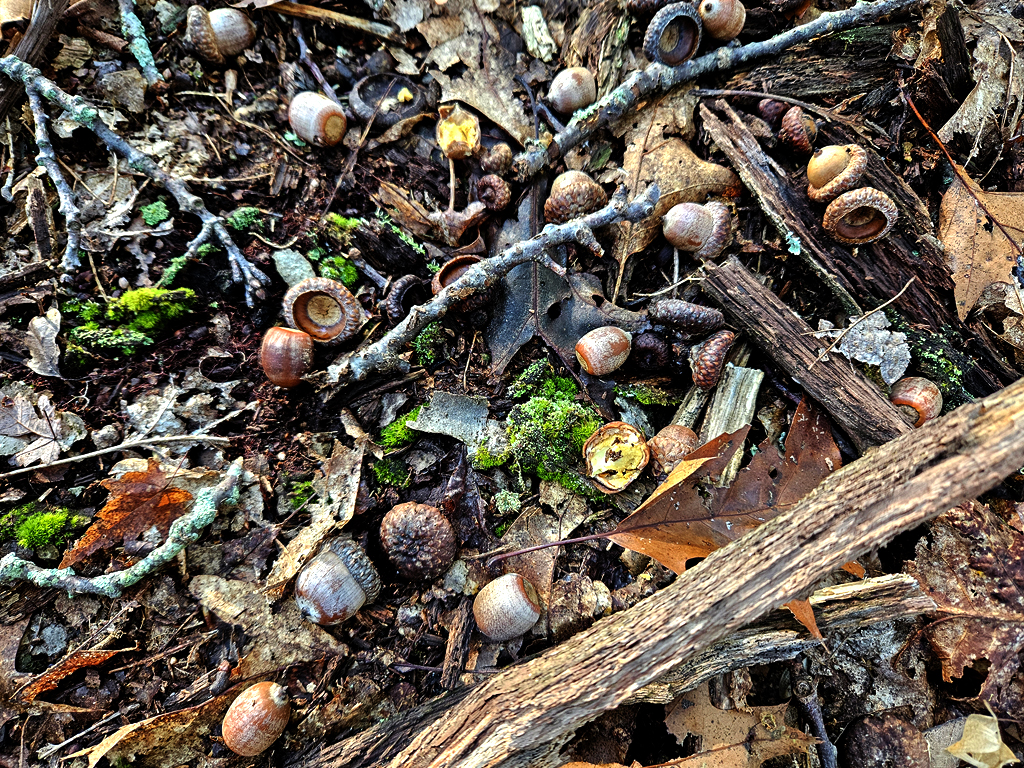
Photo by Melissa Nash
Thomas Keenan, Watershed Forester for Maryland Forest Service, Monocacy Natural Resources Management Area and Wolfsville in Frederick County
Trees continue to change color early this year due to the dry summer.
In the Monocacy Natural Resources Management Area in Dickerson, most trees are still green given this area is at a lower elevation with an abundance of water. The spicebush, boxelder, and black walnuts continue to turn yellow. The silver maples have a slight red tinge on the terminal branches.
[IMG alt="Sun rising on the Monocacy River trees overhang the banks and most are still green.
"]http://news.maryland.gov/dnr/wp-content/uploads/sites/2/2024/10/keenan1.jpg[/IMG]
Sunrise over the Monocacy River. Photo by Thomas Keenan
Wolfsville in northwestern Frederick County is at a higher elevation on the east slope of South Mountain. There, blackgums are a deep red, while the black birch trees continue to turn yellow. Hickories at higher elevations are in the early stages of turning a golden yellow. The white oaks are starting to turn a reddish-brown on the terminal branches. Red maples are starting to show a red tint on the edges of the leaves.
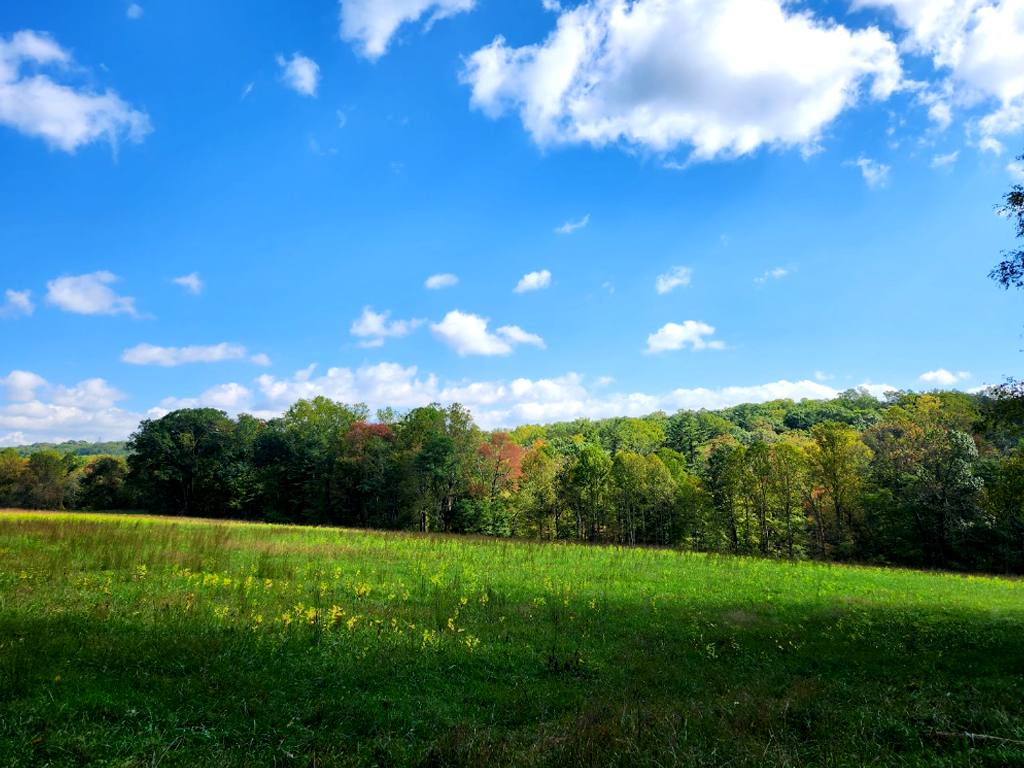
Photo by Thomas Keenan
Aaron Cook, Forester for Maryland Forest Service, Washington County
Warm sunny days and cool crisp nights have arrived, and with them larger swathes of our ridges are showing increased changes. In the Bear Pond Mountains, areas of hickory, maple, birch, and black gum are peaking. This is in contrast to the green oaks, which are usually the last trees to change each fall. Along the South Mountain corridor there are areas at higher elevations that may be near peak color, although all areas observed remain somewhat muted when compared to past falls. This weekend would be a fantastic time to hike the Appalachian Trail in Washington County, or explore neighboring Frederick County at Catoctin Mountain Park, Cunningham Falls State Park, or Gambrill State Park.
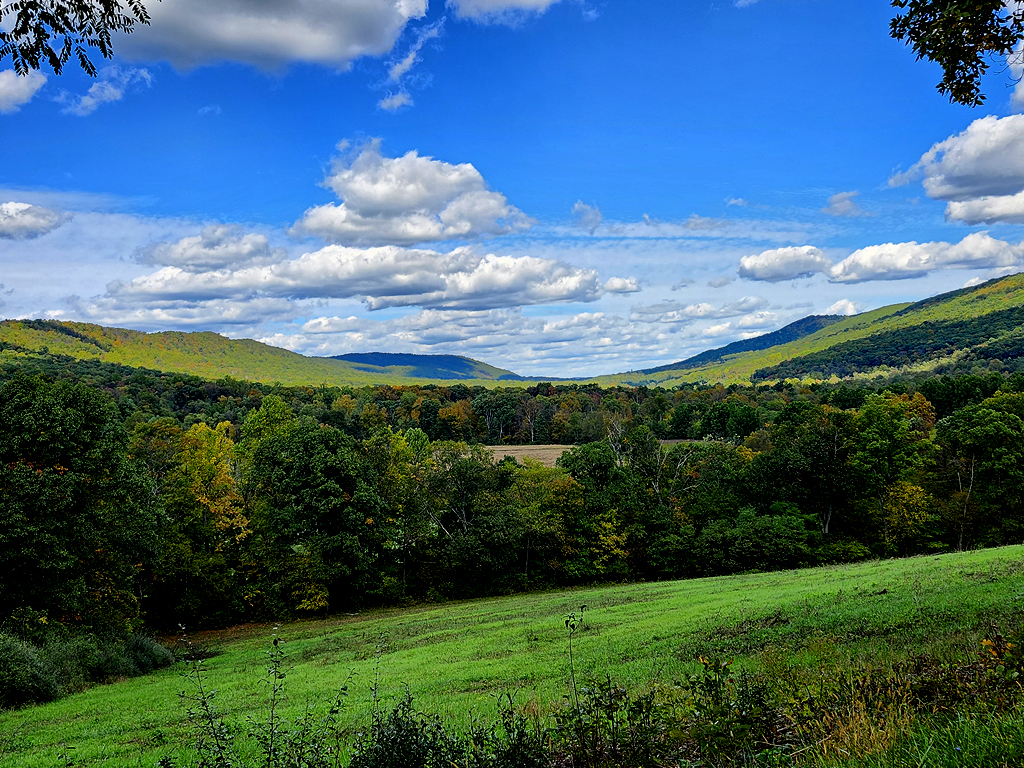
Photo by Aaron Cook
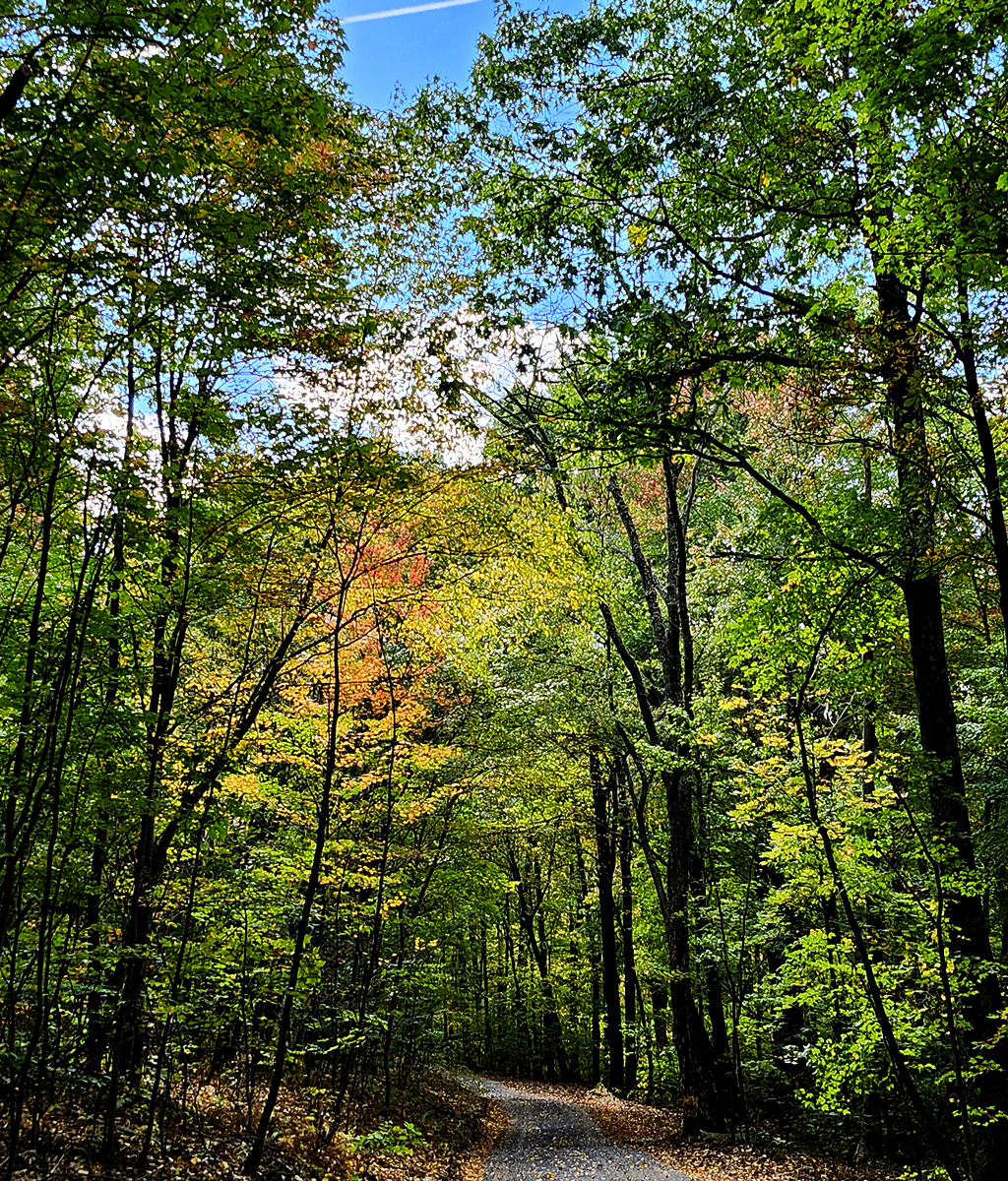
Photo by Aaron Cook
Kendra Bree, Park Ranger at Fort Frederick State Park Complex, Washington County
We are starting to see more yellows and oranges in our foliage here at Fort Frederick State Park. Many of our trees are still green and there’s still a lot of leaf droppage, but hopefully this previous rain and dropping temperatures help the color change a bit.
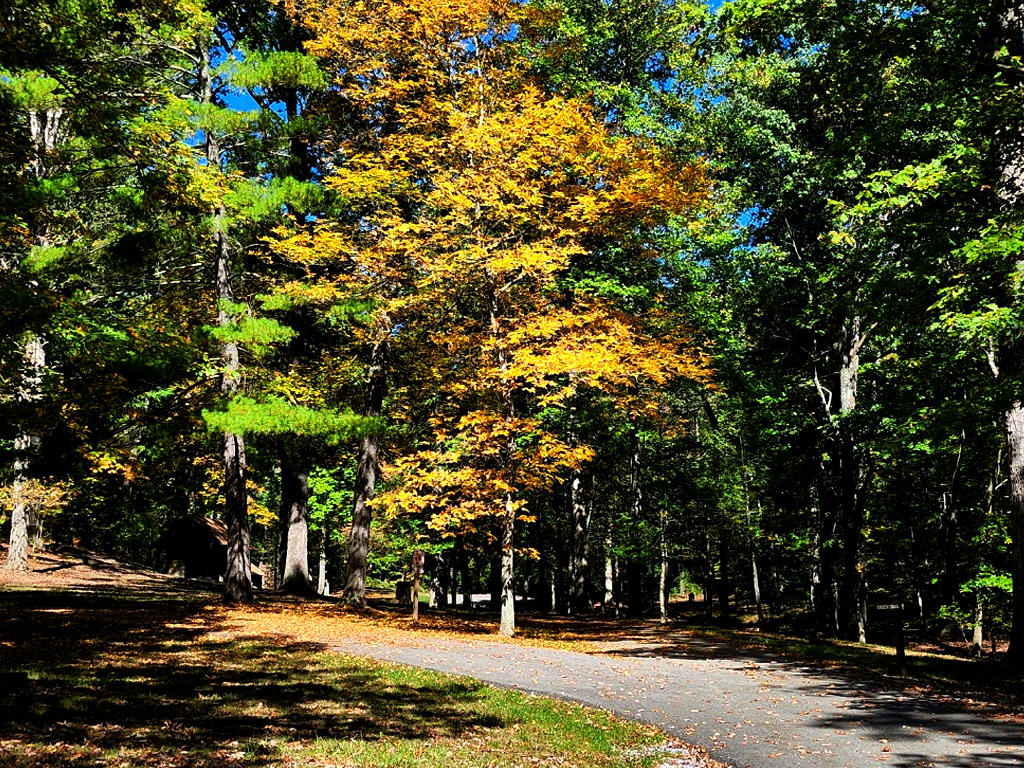
Photo by Kendra Bree
AJ Metcalf, Maryland Department of Natural Resources Office of Communications, Sideling Hill Creek State Park:
There were flickers of color in the trees throughout Sideling Hill Creek State Park and along the Western Maryland Rail Trail on Saturday, Oct. 5. However, it was clear after I flew a drone above the treetops over Sideling Hill Creek that the vast majority of the trees were still green. Nonetheless, it’s going to be a great weekend given the weather to get the bike out and hit the rail trail that extends from Big Pool to Little Orleans. Make sure, however, to be aware of the trail closure from mile marker 2.6 to mile marker 9 in Hancock due to ongoing trail repairs. I recommend starting your ride near the bike shop in Hancock and heading north toward Little Orleans to avoid the closure.
Central Region
Melissa Carson, Park Ranger at Patapsco Valley State Park in Baltimore, Howard, and Carroll counties
Dogwood trees in the Hollofield Area of Patapsco Valley State Park are beginning to show some yellow.
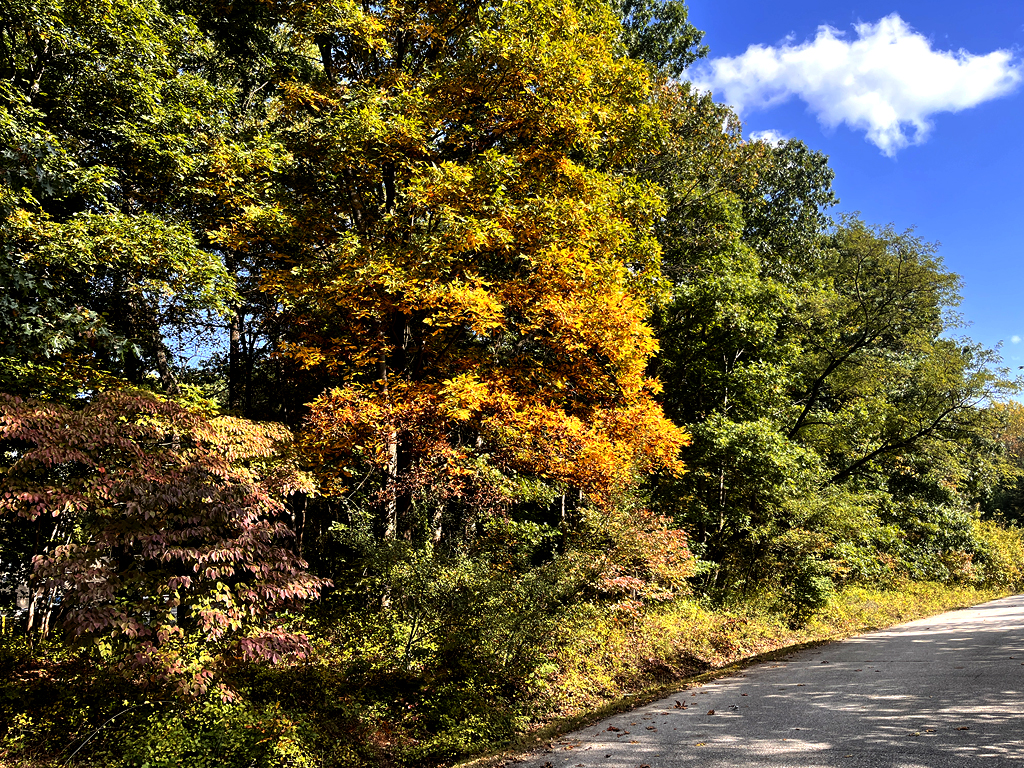
Photo by Melissa Carson
An aerial view of the Thomas Viaduct in the Avalon Area of Patapsco Valley State Park shows that the trees are beginning to show their colors in the area.
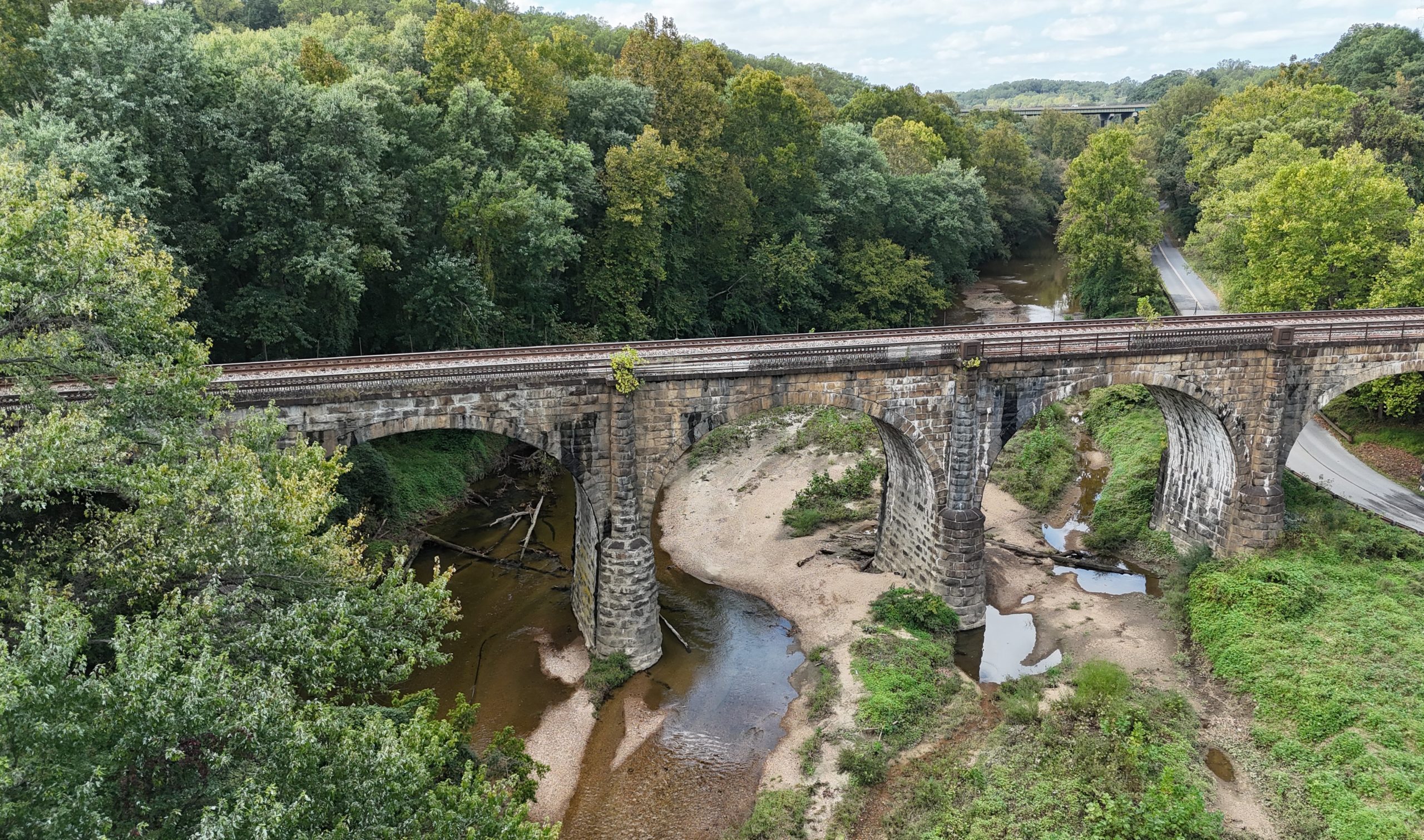
Thomas Viaduct at Patapsco Valley State Park. Photo by AJ Metcalf
Southern Region
Francis Smith, Maryland Forest Service, Anne Arundel County
One of the few fall colors showing at this point in Anne Arundel, our flowering dogwood trees are flashing beautiful burgundy to red.

Photo by Francis Smith
Elizabeth Klein, Maryland Department of Natural Resources Office of Communications, Annapolis
The trees are still mostly green with a bit of color here and there.
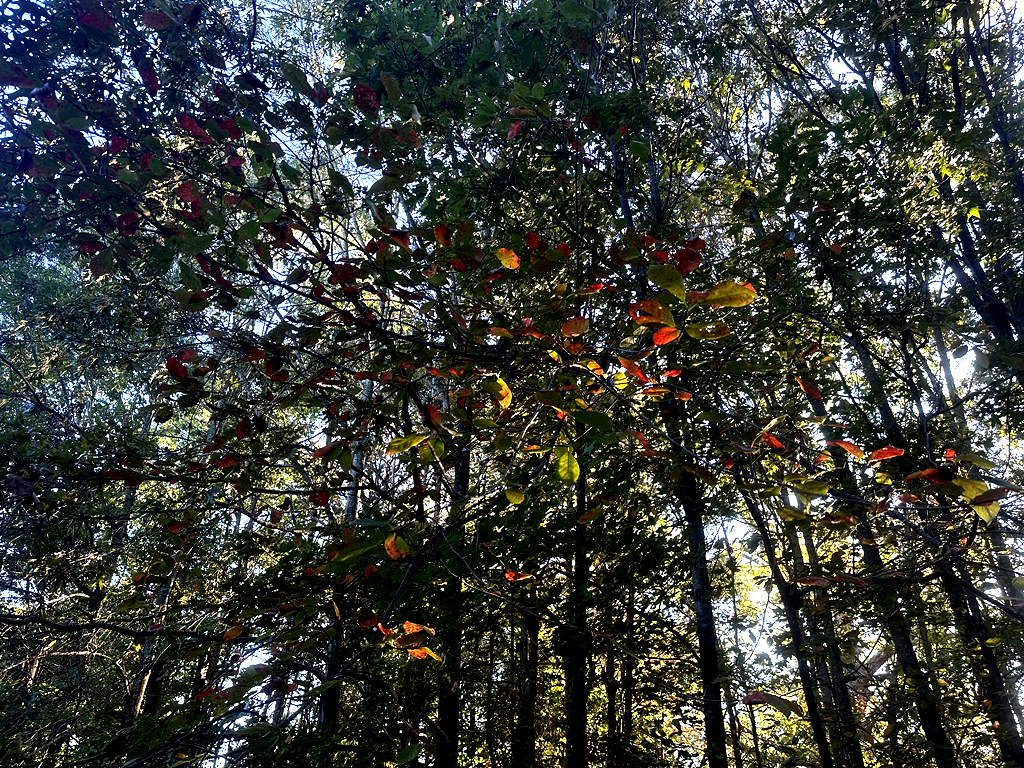
Photo by Elizabeth Klein
Eastern Region
Joanna Trojanowski, Park Ranger at Harriet Tubman State Park and Visitor Center
Foliage at Harriet Tubman Underground Railroad State Park is just starting to see some change with few leaves already falling. We are past the Goldenrod peak but American Aster is thriving.
[IMG alt="Delicate white flowers abound along the paths of the park. Their yellow centers looking very fall-like.
"]http://news.maryland.gov/dnr/wp-content/uploads/sites/2/2024/10/tubman1.jpg[/IMG]
Photo by Joanna Trojanowski
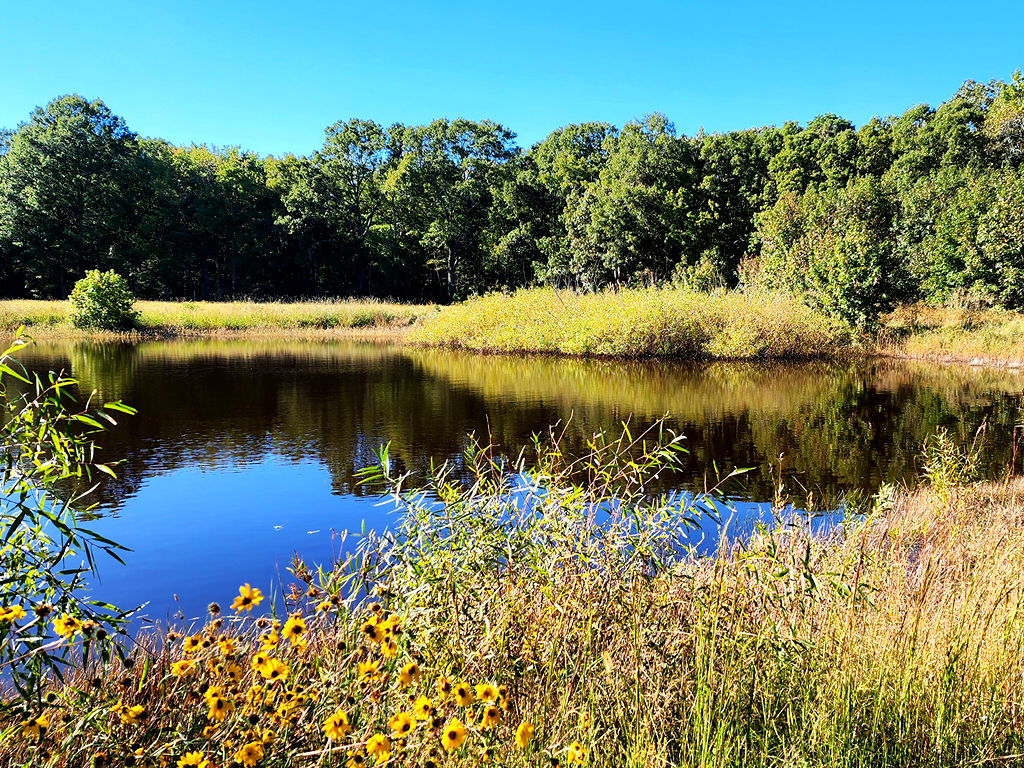
Photo by Joanna Trojanowski
Meghan Rhode, Assistant Park Manager for Assateague State Park
We are still seeing mostly green with small pops of color brought around by black gum, dogwood, sweet gum and sassafrass trees. The black gum provides the most amount of color, with reds, purples, and oranges, and is most often one of the earliest species of trees to change on the shore.
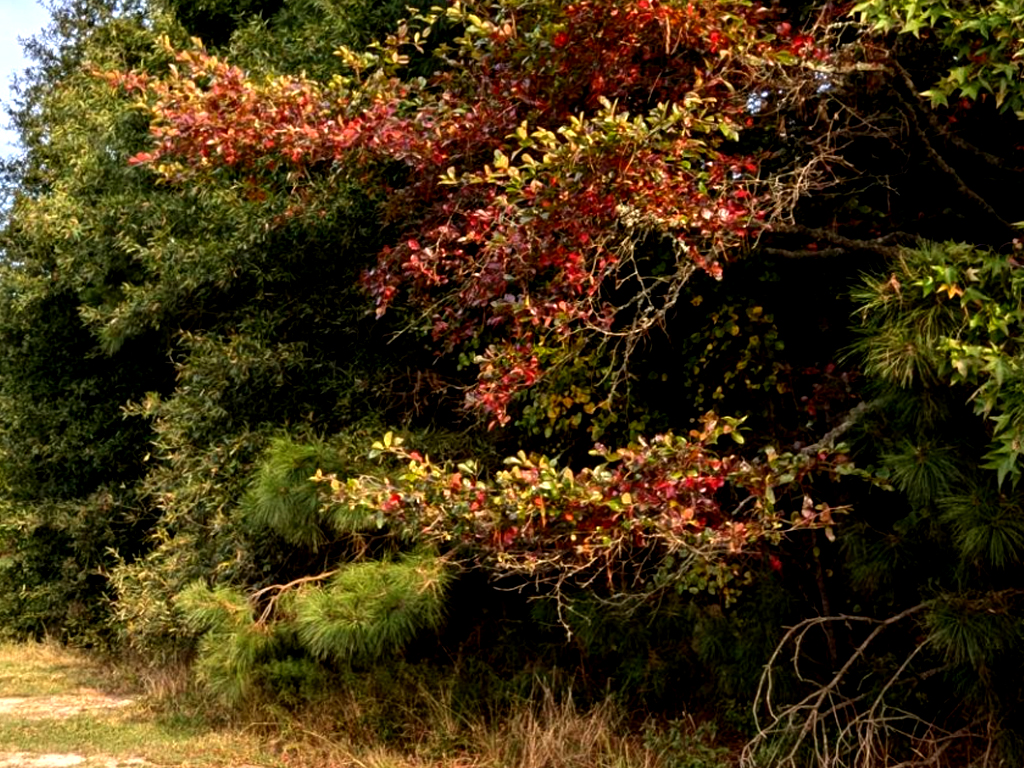
Photo by Joanna Trojanowski
Recreational Spotlight
Autumn Glory Festival – Oct. 9-13, Garrett County
This five-day festival features dozens of happenings around Garrett County, including a parade on Saturday. More information is available at autumnglory.com.
Empty Grave and Metal Spades – Oct. 13, from 7:45-8:45 p.m. in Avalon Area of Patapsco Valley State Park
William Offutt Johnson History Center 5120 South St., Halethorpe
Explore the area’s deeply intertwined history with grave robbing on a lantern led walk around Avalon. Discover the complex nature of the topic, including legal, cultural and scientific aspects of resting in peace as you witness first-hand the business of a ‘Resurrectionist.’ Sign up required. Rain or shine.
Full Moon Hike – Oct. 17, 7:45 – 9 p.m. at Soldiers Delight Visitor Center
5100 Deer Park Road, Owings Mill
Hike Soldiers Delight by the light of the Hunter’s Moon, a supermoon this year. Experience the dark beauty of this natural environment area while learning about nighttime ecosystems. Please note we will be hiking in the near dark, but bring a flashlight for the parking lot. The event is for ages 12 and up; clear skies only. Participation is limited to 25; advance registration is required.
Celestial Report
It’s going to be a busy week and a full course of celestial events.
Aurora Alert!! A fast coronal mass ejection (CME) erupted from the Sun the evening of October 8 and is likely to arrive at Earth October 10. Look just over the northern horizon from sunset to sunrise. The best times will be from 10 p.m. to 2 a.m. Ideally find a place with little or no light pollution.
On October 10 we have the Southern Taurid meteor shower. It peaks on Thursday but you could see remnants through mid November. It will be visible in the early morning, best time is from 4:30 a.m. until dawn breaks. You could also see the tail end of the Draconid meteor shower. Look to the constellation Draco, which will be high overhead in the early evening.
On October 12 the Comet C/2023 A3 (Tsuchinshan-ATLAS) will make its closest approach to earth. It will be about .46 AU, or 42,759,671.358 miles away. That’s from Maryland to Cali about 14,000 times. Look low in the west following sunset and you may see it with the unaided eye. If you have binoculars or a small telescope that would be best.
Coming soon, our next supermoon. Check in next week for details.

